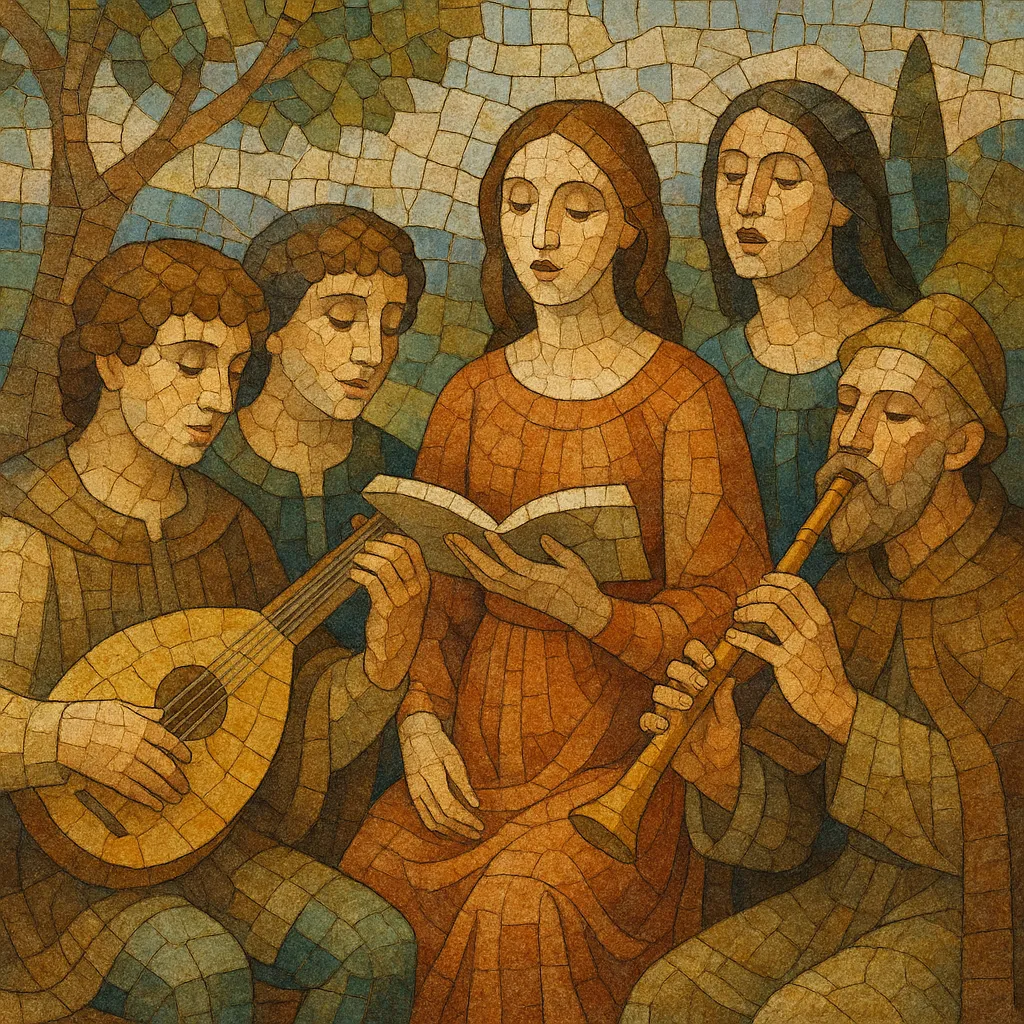The madrigal is a secular vocal music genre that flourished during the Renaissance and into the early Baroque period. It is typically written for three to six voices and is most often performed a cappella in its 16th‑century form.
Madrigals are through-composed, meaning the music changes to suit each line of text rather than following a repeating strophic pattern. Composers prioritized vivid text expression and word painting, aligning musical gestures with the imagery and rhetoric of the poetry—frequently drawing on Petrarchan themes of love, desire, nature, and melancholy.
Over time, the style evolved from relatively clear textures and diatonic harmonies to highly expressive chromaticism and bold dissonances. Late madrigals introduced instruments doubling or accompanying the voices and helped usher in the seconda pratica, ultimately bridging toward early opera and other Baroque vocal forms.
The 16th‑century Italian madrigal emerged in the 1520s, drawing on earlier polyphonic traditions and poetic refinement. While Italy already had secular song types like the frottola, the madrigal distinguished itself through its elevated poetry, flexible musical structures, and emphasis on expressive declamation. Early figures such as Philippe Verdelot and Jacques Arcadelt shaped a clearer, more homophonic style that prioritized text intelligibility and graceful counterpoint.
By the mid‑century, composers like Cipriano de Rore and Luca Marenzio deepened the language of the madrigal with intricate counterpoint and nuanced text painting. The music mirrored the emotional turns of the poetry, using suspensions, imitation, and modal color to highlight meaning. Later, radical harmonic experimentation—exemplified by Carlo Gesualdo—pushed chromaticism and dissonance to unprecedented expressive extremes.
Claudio Monteverdi’s later madrigals embraced the seconda pratica, placing rhetorical expression over strict contrapuntal rules. Instrumental participation increased, basso continuo appeared, and sectional designs became more dramatic. These developments fed directly into the birth of opera and the flourishing of other Baroque vocal genres. In England, a parallel "English Madrigal School" (Thomas Morley, Thomas Weelkes, John Wilbye) adapted Italian techniques to English texts, popularizing both serious madrigals and lighter, dance‑inflected part-songs.
Although the madrigal waned as opera and cantata rose, its legacy persists in choral repertoire, techniques of text-driven composition, and the modern revival of Renaissance vocal music. Its emphasis on rhetoric, text painting, and ensemble sensitivity continues to inform composers and performers.


